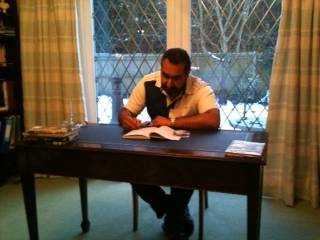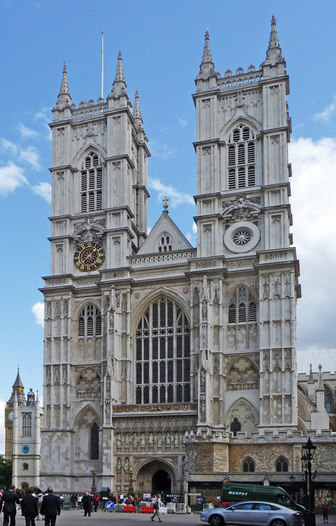|
Rupinderpal Singh Dhillon
Rupinderpal Singh Dhillon or Roop Dhillon (Punjabi: ਰੂਪਿੰਦਰਪਾਲ ਸਿੰਘ ਢਿੱਲੋਂ, born 1969) is a British Punjabi writer of fiction and poetry. Early life and education Dhillon was born in West London and initially raised in Southall. He studied at Oxford Brookes University and De Montfort University and is an accountant. He has been living in Reigate since the mid 2000s. Writing career Originally intending to write an English novel based on the life of Maharaja Ranjit Singh in the mode of Alexandre Dumas, Dhillon became interested in writing in Punjabi Punjabi, or Panjabi, most often refers to: * Something of, from, or related to Punjab, a region in India and Pakistan * Punjabi language * Punjabi people * Punjabi dialects and languages Punjabi may also refer to: * Punjabi (horse), a British Th ... after learning the Gurmukhi alphabet in his thirties. His debut novel, ''Neela Noor'', was published in 2007. He writes in the locally spoken ... [...More Info...] [...Related Items...] OR: [Wikipedia] [Google] [Baidu] |
Punjabi Language
Punjabi (; ; , ), sometimes spelled Panjabi, is an Indo-Aryan languages, Indo-Aryan language of the Punjab, Punjab region of Pakistan and India. It has approximately 113 million native speakers. Punjabi is the most widely-spoken first language in Pakistan, with 80.5 million native speakers as per the 2017 Census of Pakistan, 2017 census, and the 11th most widely-spoken in India, with 31.1 million native speakers, as per the 2011 Census of India, 2011 census. The language is spoken among a Punjabi diaspora, significant overseas diaspora, particularly in Canada, the United States, and the United Kingdom. In Pakistan, Punjabi is written using the Shahmukhi alphabet, based on the Persian alphabet, Perso-Arabic script; in India, it is written using the Gurmukhi, Gurmukhi alphabet, based on the Brahmic scripts, Indic scripts. Punjabi is unusual among the Indo-Aryan languages and the broader Indo-European languages, Indo-European language family in its usage of Tone (linguistics) ... [...More Info...] [...Related Items...] OR: [Wikipedia] [Google] [Baidu] |
Punjabi People
The Punjabis (Punjabi: ; ਪੰਜਾਬੀ ; romanised as Panjābīs), are an Indo-Aryan ethnolinguistic group associated with the Punjab region of the Indian subcontinent, comprising areas of eastern Pakistan and northwestern India. They generally speak Standard Punjabi or various Punjabi dialects on both sides. The ethnonym is derived from the term ''Punjab'' (Five rivers) in Persian to describe the geographic region of the northwestern part of the Indian subcontinent, where five rivers Beas, Chenab, Jhelum, Ravi, and Sutlej merge into the Indus River, in addition of the now-vanished Ghaggar. The coalescence of the various tribes, castes and the inhabitants of the Punjab region into a broader common "Punjabi" identity initiated from the onset of the 18th century CE. Historically, the Punjabi people were a heterogeneous group and were subdivided into a number of clans called '' biradari'' (literally meaning "brotherhood") or ''tribes'', with each person bound to ... [...More Info...] [...Related Items...] OR: [Wikipedia] [Google] [Baidu] |
West London (sub-region)
West London is the western part of London, England, north of the River Thames, west of the City of London, and extending to the Greater London boundary. The term is used to differentiate the area from the other parts of London: North London, East London and South London. West London was part of the historic county of Middlesex. Emergence Early West London had two main focuses of growth, the area around Thorney Island, site of Westminster Abbey and the Palace of Westminster, and ribbon development heading west - towards Westminster - from gates in the walls of the City of London. In the 17th century these areas of growth would be linked by high status new developments, which formed a focal point in their own right, later becoming known as the West End of London. Initial growth at Thorney Island, Westminster The development of the area began with the establishment of the Abbey on a site then called Thorney Island, the choice of site may in part relate to the natural ford ... [...More Info...] [...Related Items...] OR: [Wikipedia] [Google] [Baidu] |
Southall
Southall () is a large suburban county of West London, England, part of the London Borough of Ealing and is one of its seven major towns. It is situated west of Charing Cross and had a population of 69,857 as of 2011. It is generally divided in three parts: the mostly residential area around Lady Margaret Road ( Dormers Wells); the main commercial centre at High Street and Southall Broadway (part of the greater Uxbridge Road); and Old Southall/Southall Green to the south consisting of Southall railway station, industries and Norwood Green bounded by the M4. It was historically a municipal borough of Middlesex administered from Southall Town Hall until 1965. Southall is located on the Grand Union Canal (formerly the Grand Junction Canal) which first linked London with the rest of the growing canal system. It was one of the last canals to carry significant commercial traffic (through the 1950s) and is still open to traffic and is used by pleasure craft. The canal separa ... [...More Info...] [...Related Items...] OR: [Wikipedia] [Google] [Baidu] |
Oxford Brookes University
Oxford Brookes University (formerly known as Oxford Polytechnic) is a public university in Oxford, England. It is a new university, having received university status through the Further and Higher Education Act 1992. The university was named after its first principal, John Henry Brookes, who played a major role in the development of the institution. Oxford Brookes University is spread across four campuses, with three primary sites based in and around Oxford and the fourth campus located in Swindon. Oxford Brookes University planned to demolish its Wheatley campus and build houses on the site; the local council refused planning permission, but Oxford Brookes appealed, and won in 2020. the Brookes Web site said that the institution had 16,900 students, 2,800 staff and over 190,000 alumni in over 177 countries. The university is divided into four faculties: Oxford Brookes Business School, Health and Life Sciences, Humanities and Social Sciences, and Technology, Design and Envi ... [...More Info...] [...Related Items...] OR: [Wikipedia] [Google] [Baidu] |
De Montfort University
De Montfort University Leicester (DMU) is a public university in the city of Leicester, England. It was established in accordance with the Further and Higher Education Act in 1992 as a degree awarding body. The name De Montfort University was taken from Simon de Montfort, a 13th-century Earl of Leicester. De Montfort University has approximately 27,000 full and part-time students, 3,240 staff and an annual turnover in the region of £168 million. The university is organised into four faculties: Art, Design, and Humanities (ADH); Business and Law (BAL); Health and Life Sciences (H&LS); and Computing, Engineering and Media (CEM). It is a Sustainable Development Hub, focusing on Peace, Justice and Strong Institutions, an initiative by the United Nations launched in 2018. The Department of Education awarded university a Gold rating in the 2017 Teaching Excellence Framework. It is a member of the Association of Commonwealth Universities. History Origins The university's or ... [...More Info...] [...Related Items...] OR: [Wikipedia] [Google] [Baidu] |
Ranjit Singh
Ranjit Singh (13 November 1780 – 27 June 1839), popularly known as Sher-e-Punjab or "Lion of Punjab", was the first Maharaja of the Sikh Empire, which ruled the northwest Indian subcontinent in the early half of the 19th century. He survived smallpox in infancy but lost sight in his left eye. He fought his first battle alongside his father at age 10. After his father died, he fought several wars to expel the Afghans in his teenage years and was proclaimed as the "Maharaja of Punjab" at age 21. His empire grew in the Punjab region under his leadership through 1839. Prior to his rise, the Punjab region had numerous warring misls (confederacies), twelve of which were under Sikh rulers and one Muslim. Ranjit Singh successfully absorbed and united the Sikh misls and took over other local kingdoms to create the Sikh Empire. He repeatedly defeated invasions by outside armies, particularly those arriving from Afghanistan, and established friendly relations with the Britis ... [...More Info...] [...Related Items...] OR: [Wikipedia] [Google] [Baidu] |
Alexandre Dumas
Alexandre Dumas (, ; ; born Dumas Davy de la Pailleterie (), 24 July 1802 – 5 December 1870), also known as Alexandre Dumas père (where '' '' is French for 'father', to distinguish him from his son Alexandre Dumas fils), was a French writer. His works have been translated into many languages and he is one of the most widely read French authors. Many of his historical novels of adventure were originally published as serials, including '' The Count of Monte Cristo'', '' The Three Musketeers'', '' Twenty Years After'' and '' The Vicomte of Bragelonne: Ten Years Later''. His novels have been adapted since the early twentieth century into nearly 200 films. Prolific in several genres, Dumas began his career by writing plays, which were successfully produced from the first. He also wrote numerous magazine articles and travel books; his published works totalled 100,000 pages. In the 1840s, Dumas founded the Théâtre Historique in Paris. His father, General Thomas-Alexandre Dumas ... [...More Info...] [...Related Items...] OR: [Wikipedia] [Google] [Baidu] |
Gurmukhi
Gurmukhī ( pa, ਗੁਰਮੁਖੀ, , Shahmukhi: ) is an abugida developed from the Laṇḍā scripts, standardized and used by the second Sikh guru, Guru Angad (1504–1552). It is used by Punjabi Sikhs to write the language, commonly regarded as a Sikh script, Gurmukhi is used in Punjab, India as the official script of the Punjabi language. While Shahmukhi script is used in Punjab, Pakistan as the official script. The primary scripture of Sikhism, the Guru Granth Sahib, is written in Gurmukhī, in various dialects and languages often subsumed under the generic title '' Sant Bhasha'' or ''saint language'', in addition to other languages like Persian and various phases of Indo-Aryan languages. Modern Gurmukhī has thirty-five original letters, hence its common alternative term ''paintī'' or "the thirty-five," plus six additional consonants, nine vowel diacritics, two diacritics for nasal sounds, one diacritic that geminates consonants and three subscript ch ... [...More Info...] [...Related Items...] OR: [Wikipedia] [Google] [Baidu] |
1969 Births
This year is notable for Apollo 11's first landing on the moon. Events January * January 4 – The Government of Spain hands over Ifni to Morocco. * January 5 ** Ariana Afghan Airlines Flight 701 crashes into a house on its approach to London's Gatwick Airport, killing 50 of the 62 people on board and two of the home's occupants. * January 14 – An explosion aboard the aircraft carrier USS ''Enterprise'' near Hawaii kills 27 and injures 314. * January 19 – End of the siege of the University of Tokyo, marking the beginning of the end for the 1968–69 Japanese university protests. * January 20 – Richard Nixon is sworn in as the 37th President of the United States. * January 22 – An assassination attempt is carried out on Soviet leader Leonid Brezhnev by deserter Viktor Ilyin. One person is killed, several are injured. Brezhnev escaped unharmed. * January 27 ** Fourteen men, 9 of them Jews, are executed in Baghdad for spying for Israel. ** R ... [...More Info...] [...Related Items...] OR: [Wikipedia] [Google] [Baidu] |



_Portrait_of_Robert_Cheseman_(1485-1547)_Mauritshuis_276.jpg)




.jpg)